Segmentation and Positioning in Marketing Strategy
1/59
There's no tags or description
Looks like no tags are added yet.
Name | Mastery | Learn | Test | Matching | Spaced |
|---|
No study sessions yet.
60 Terms
Generic Markets
Broad categories of products that fulfill similar customer needs.
Product-Markets
Specific markets that consist of products designed to meet the needs of a particular customer group.
Market Segmentation
The process of dividing a market into distinct groups of buyers with different needs or behaviors.
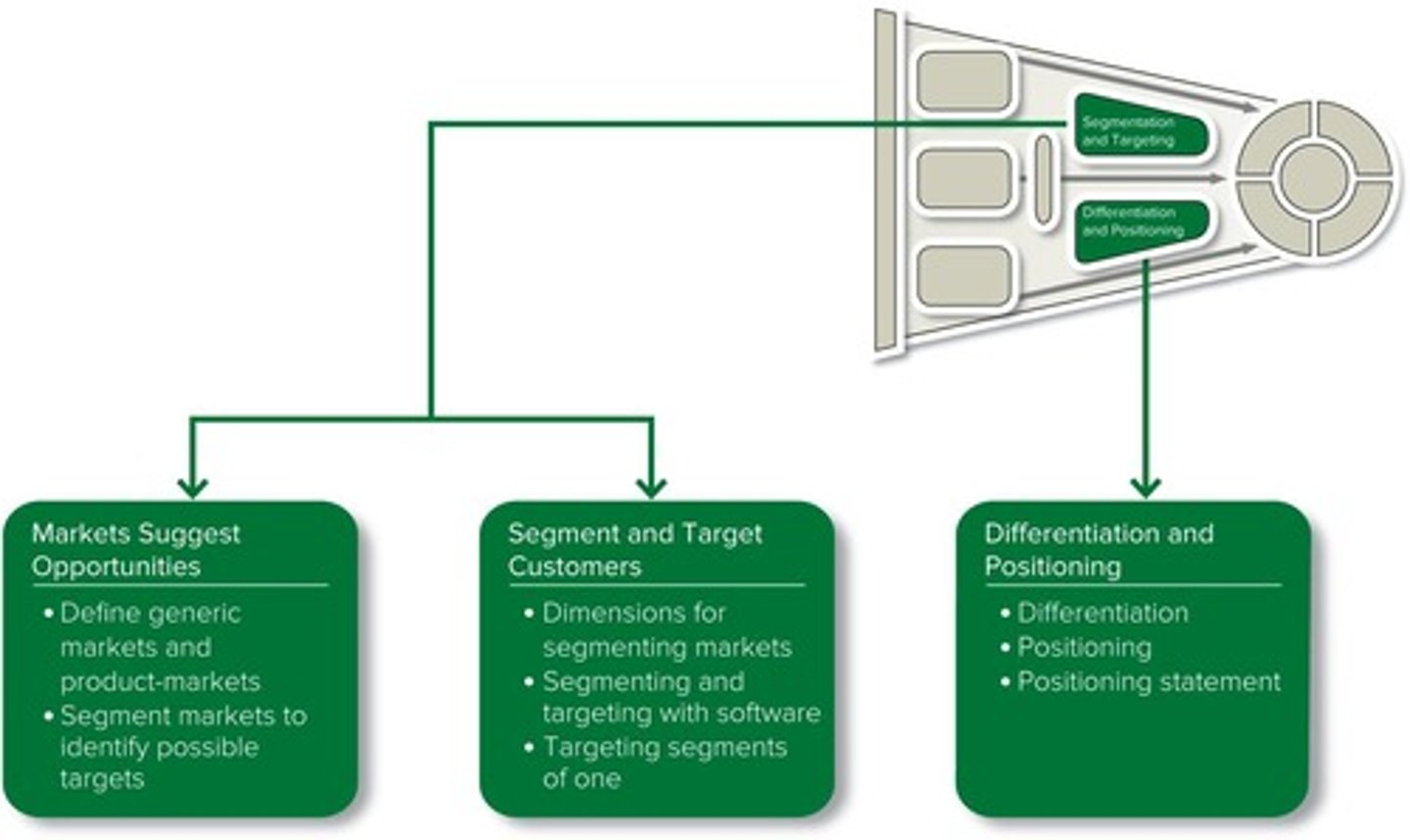
Market-Oriented Strategy Planning
Three approaches to planning that focus on the needs and wants of the market.
Dimensions for Segmenting Markets
Factors that can be used to categorize markets into segments.
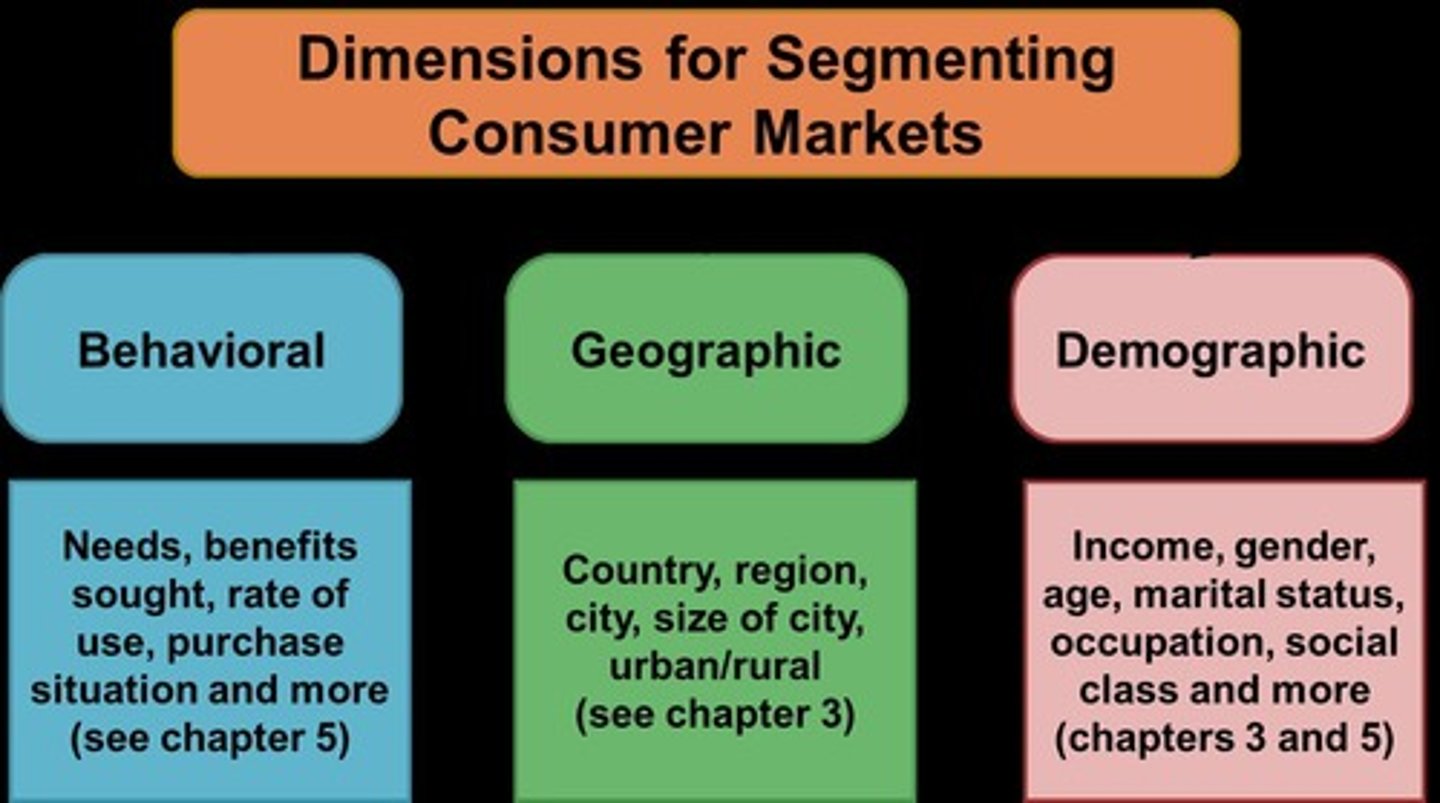
Best Practice Approach
A method for segmenting markets that is widely recognized as the most effective.
Computer-Aided Methods
Technological tools used to assist in the segmentation of markets.
Positioning
The process of establishing a brand or product in the minds of consumers relative to competitors.
Target Markets
Specific groups of consumers that a business aims to reach with its products.
Segmentation Process
A two-step process involving naming broad product-markets and segmenting them to select target markets.
Market Grid Diagram
A visual representation that illustrates submarkets within a broader market.
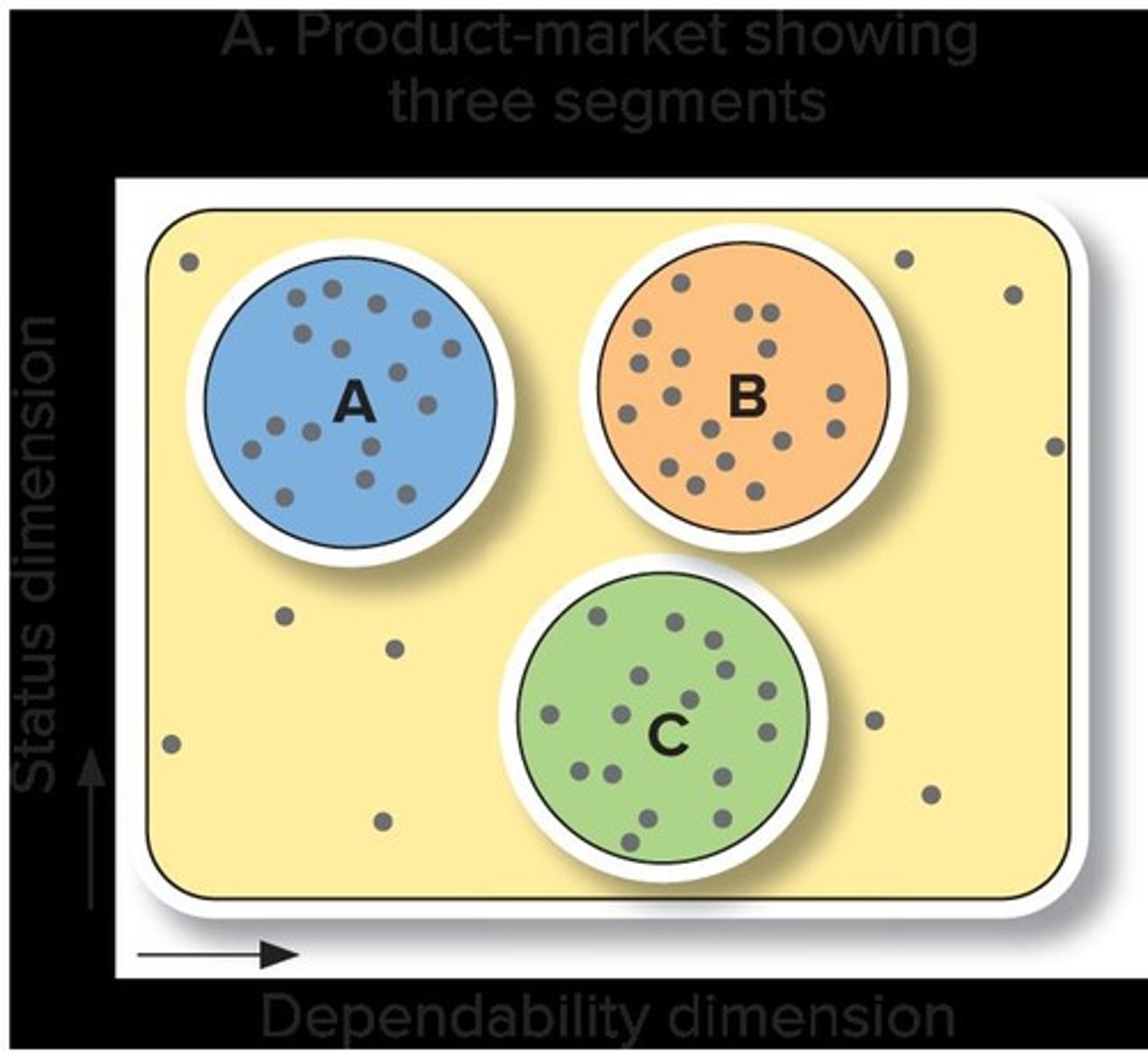
Aggregated Target Markets
Groups of consumers with similar positions that can be combined for marketing purposes.
Segmenters
Marketers who focus on specific target markets.
Combiners
Marketers who aim at broader markets by combining segments.
Diverse Market Area
A market characterized by a wide range of consumer preferences and needs.
Culinary Styles
Different types of cuisine offered by restaurants, such as American, Italian, Chinese, etc.
Sales Loss to Competitors
The decline in sales experienced by a business due to competition from other businesses.
Blank Approach
A strategy that fails to adequately address the needs of the target market.
Generic Market
A broad definition of a market that encompasses various types of products and customer needs.
Product-Market
A specific market definition that focuses on a particular product and its target customer.
Multiple Target Market Approach
A marketing strategy that targets multiple distinct market segments with tailored marketing mixes.
Geographic Segmenting Dimension
A method of segmenting markets based on the geographical location of potential customers.
Behavioral Segmenting Dimension
A method of segmenting markets based on consumer behaviors and purchasing patterns.
Demographic Segmenting Dimension
A method of segmenting markets based on demographic factors such as age, gender, income, etc.
Benefit Segmenting Dimension
A method of segmenting markets based on the specific benefits that consumers seek from a product.
Combined Target Market Approach
A marketing strategy that combines multiple market segments into a single target market.
Structured Target Market
A marketing strategy that organizes and defines target markets in a systematic way.
Market Grid Diagram
A visual representation that outlines various submarkets within a broader market.
Potential Target Markets
Groups of consumers that share similar characteristics and can be targeted for marketing efforts.
Segmenters
Marketers who focus on specific target markets by tailoring their offerings to meet distinct needs.
Combiners
Marketers who aim to combine multiple segments into a broader target market.
Customer Needs
The specific requirements and desires that consumers seek to fulfill through products.
Types of Products
Different categories of goods or services that can be offered to meet customer needs.
Market Definitions
Descriptions that clarify the scope and focus of a particular market.
Target Markets
Specific groups of consumers identified as the intended audience for marketing efforts.
Marketing Mix
The combination of product, price, place, and promotion strategies used to market a product.
Customer Types
Different categories of consumers based on their characteristics and purchasing behaviors.
Geographic Area
The physical location or region where potential customers reside.
Exhibit 4-2
A table summarizing possible product markets and examples of types of products for generic markets.
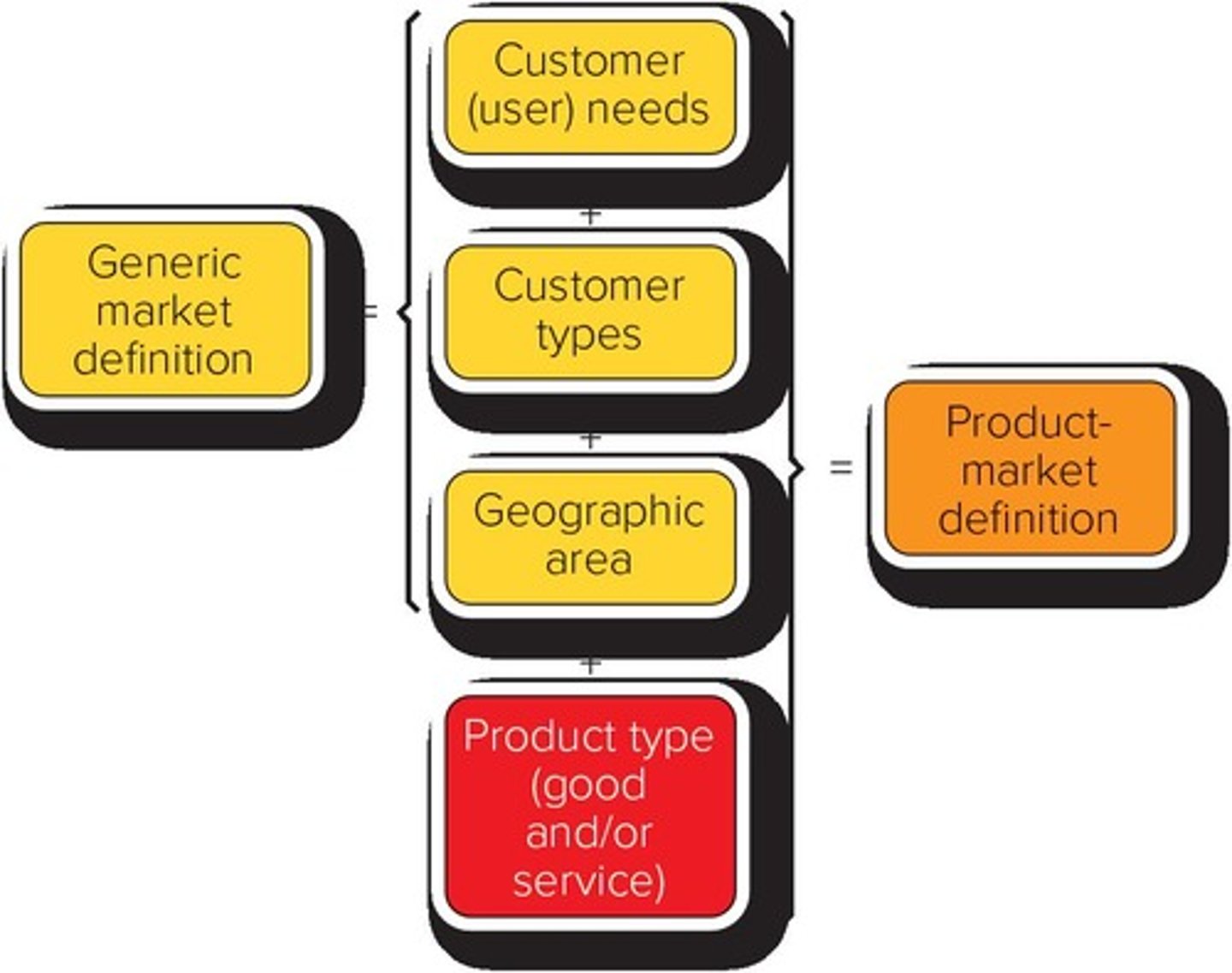
Exhibit 4-3
A visual representation showing the relationship between generic and product-market definitions.
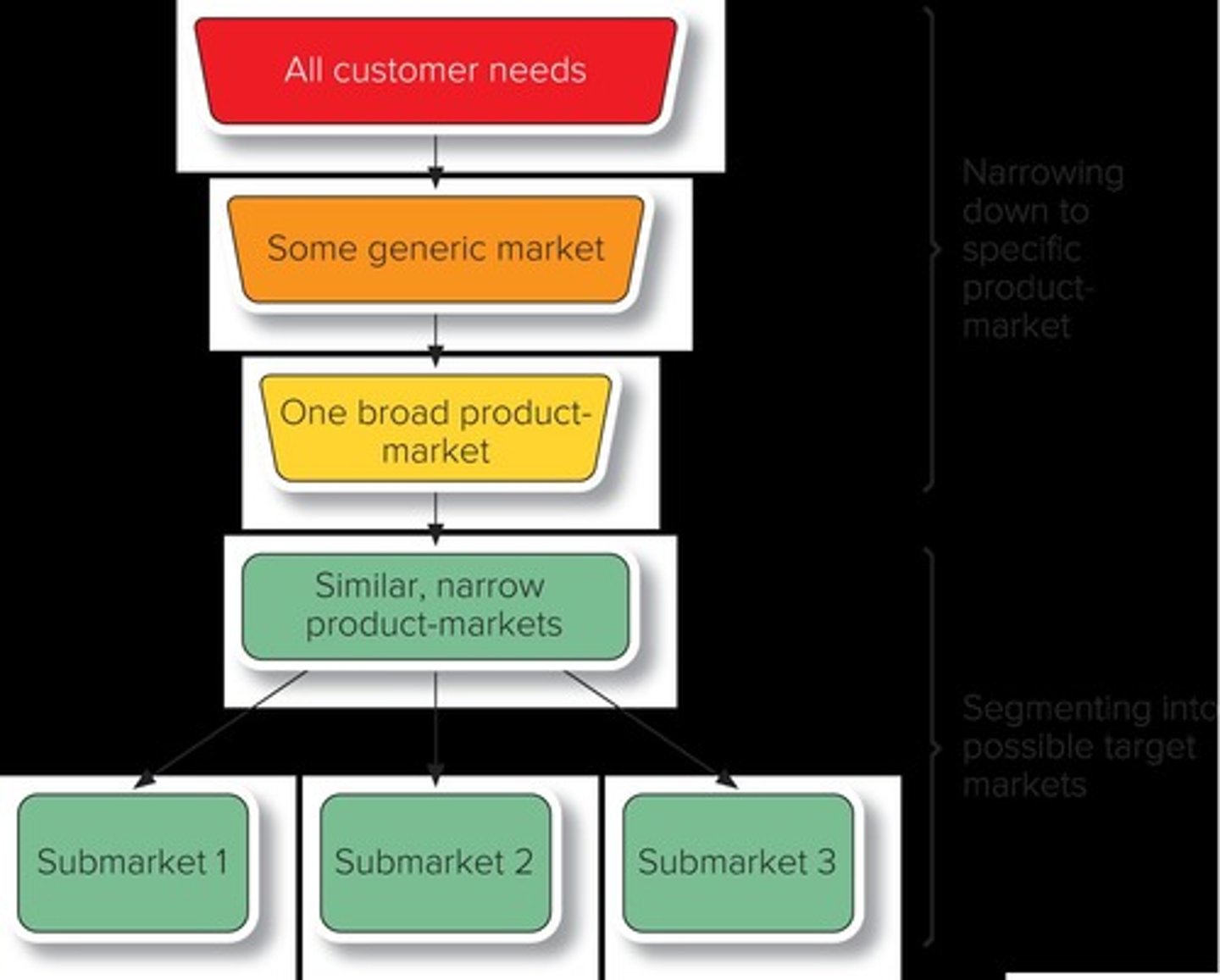
Upscale Execs
One of the three market segments for the hotel guest product-market.
Event-Centered Guests
One of the three market segments for the hotel guest product-market.
Resort Seekers
One of the three market segments for the hotel guest product-market.
Clustering
A sophisticated technique that may help in segmenting and targeting customers.
Customer Relationship Management (CRM)
A sophisticated technique that may help in segmenting and targeting customers.
Dynamic Behavioral Segmentation
A sophisticated technique that may help in segmenting and targeting customers.
Differentiation
The process of distinguishing a product from competitors to attract a specific target market.
Positioning
The strategy of creating a distinct image of a product in the minds of the target market.
Positioning Statement
A statement that provides direction for marketing strategy by defining the target market, brand, product type, key benefits, and reasons to believe.
Market
A group of potential customers with similar needs or characteristics.
Generic Market
A market that includes all potential customers with similar needs but does not specify a product type.
Product-Market
A market that includes customers with similar needs for a specific product type.
Segmenting
The act of identifying and defining market segments.
Market Segment
A subgroup of a larger market that shares common characteristics.
Single Target Market Approach
A marketing strategy that focuses on one specific market segment.
Multiple Target Market Approach
A marketing strategy that targets multiple market segments with different marketing mixes.
Combined Target Market Approach
A marketing strategy that combines multiple segments into one larger target market.
Combiners
Marketers who seek to combine multiple market segments into one larger segment.
Segmenters
Marketers who focus on targeting specific segments rather than combining them.
Clustering Techniques
Methods used to group customers based on similarities for effective segmentation.